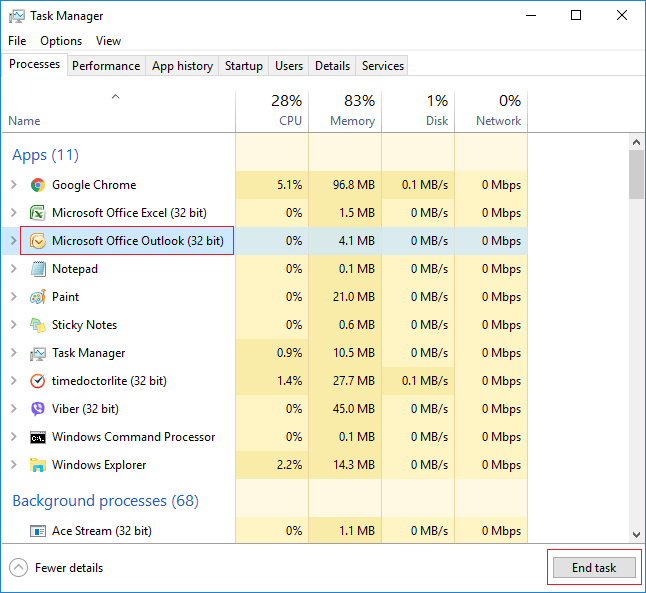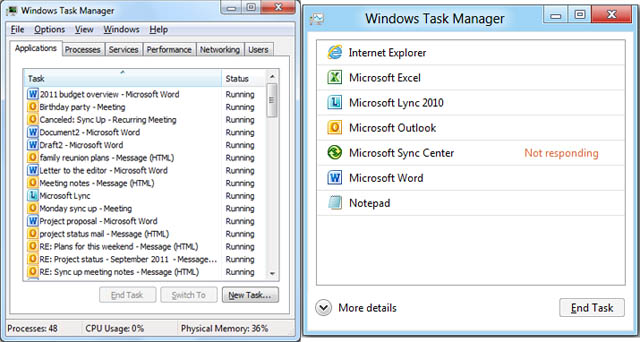You know that tab at the bottom of your Outlook called Tasks? It’s a tab full of features to help you organize all of your flagged emails and create a task list. However, once you’ve entered this magical organizational tab, it can be slightly confusing to navigate. There are tasks you can create and a To-Do list in the left hand side bar. But what’s the difference?
An item is added to the To-Do list when you add this flag to an email in your inbox. We know how easily emails can get lost in our inbox, so it can be helpful to add a flag to an email that requires a response, or has an action item within the message. As a follow-up to the flag, the email is also added to the To-Do List in the Tasks tab.
- What if you get a system that can instantly help you managing your outlook tasks, to-do list and activities, a system capable of sorting your things outs, from setting reminders to monitor progress.
- In Outlook 2007, please select Share Tasks from the right-clicking menu. See screenshot: Or you can click Folder Share Tasks in the Outlook 2010 and 2013 Ribbon after selecting the Exchange tasks. Click File Folder Share “Tasks” in Outlook 2007. See screenshot: 3. Then the Sharing invitation – Tasks window pops up.
- Get the complete Outlook 2016 training course here.
Outlook is a starter scenario for many users. Most of Information Workers’ tasks come from e-mails. You can simply flag them to convert to tasks (well – this is not really true – flagging an email is different than creating a task. Mike Song shares the best-ever Outlook tip. Time Management is easy when you can rapidly convert an email into a task. Everyone should try it now!
Also within the Tasks tab is Tasks. Tasks are items you create from scratch. They are not tied to an email message and you can add important details to your task. In the new task window, you can add details such as a start date, due date, reminder, and priority. You are also able to assign tasks to others to add to their task list, integrate your task list with OneNote, and send a status report update.
Check out the overview video above. The steps below describe how to create a new task.
- Select Tasks tab at the bottom of your Outlook window.
- Click New Task in the upper left hand corner.
- A new window will appear where you can write your task and add details with the many feature options.
In the Task Manager (see picture below), you are able to check all the running tasks, end any task and so forth. Thus, it is necessary to learn how to open it on your PC. For your convenience, this text lists 9 methods to open Task Manager in Windows 10.

Video guide on how to open Task Manager in Windows 10:
Outlook Task Manager
9 ways to open Task Manager in Windows 10:
Way 1: Open the app through taskbar.

Right-click blank area on the taskbar, and choose Task Manager in the context menu.
Way 2: Turn on Task Manager from Quick Access Menu.
Right-tap the lower-left corner to open the menu, and then select Task Manager on it.
Way 3: Open Task Manager in Start Menu.
Step 1: Tap the bottom-left Start button and choose All Apps in the menu.
Step 2: Open the Windows System folder. Download powerpc for mac.
Step 3: Click Task Manager to open it.
Way 4: Open this program in Control Panel.
Step 1: Enter Control Panel.
Step 2: Input task manager in the upper-right search box, and tap Task Manager in the results.

Way 5: Start Task Manager via Run.
Press Windows+R to open Run dialog, enter taskmgr and tap OK.
Using Outlook For Task Management
Way 6: Open the program from Search panel.
Step 1: Press Windows+C to open Charms Menu, and choose Search on it.
Step 2: Enter task and click Task Manager.
Tip: There are two options named Task Manager on the Search Panel, and you can choose either of them.
Way 7: Access Task Manager with the help of Command Prompt.
Step 1: Click the Start button, enter cmd in the empty box and tap Command Prompt.
Step 2: Type taskmgr and press Enter.
Way 8: Open it through Windows PowerShell.

Step 1: Tap the Search button on the taskbar, type windows powershell and click Windows PowerShell to enter it.
Step 2: Input taskmgr and hit Enter.
Way 9: Open Task Manager from Ctrl+Alt+Del options.
Press Ctrl+Alt+Del and choose Task Manager from the choices.
Outlook To Do
Related Articles:
